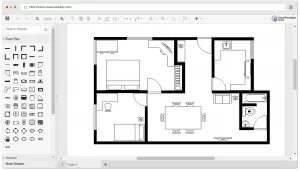Can I Design a Building Online?
The Rise of Online Design Tools
In the digital age, the way we approach various tasks and industries has been revolutionized by technology. Architecture and design are no exceptions. With the advent of sophisticated online design tools, designing a building has become more accessible and convenient than ever before.
Benefits of Online Design
Designing a building online offers numerous advantages that traditional methods simply cannot match. Let’s explore some of the key benefits:
1. Accessibility and Convenience
Online design tools allow aspiring architects and designers to work from anywhere with an internet connection. Gone are the days when you had to be physically present at a design studio or rely on complex software installations. Now, with just a few clicks, you can access a range of powerful design tools from your computer or even your smartphone.
2. Cost Savings
Traditional design methods often involve expensive software licenses and equipment. On the other hand, online design tools are often available at a fraction of the cost, sometimes even free. This affordability makes it easier for budding designers to explore their creativity and experiment with various design ideas.
3. Collaborative Potential
Designing a building often requires collaboration among architects, engineers, and clients. Online design tools provide a platform where multiple stakeholders can work together seamlessly. Design files can be easily shared, and real-time collaboration features allow instant feedback and adjustments. This streamlines the design process and fosters effective communication among team members.

4. Extensive Design Options
Online design tools offer an extensive range of features and design options that can be customized to meet specific requirements. From 3D modeling to virtual reality walkthroughs, these tools empower architects to visualize and refine their designs with greater precision. Users can experiment with different materials, colors, and textures to create visually stunning and functional spaces.
Limitations and Considerations
While online design tools have numerous advantages, it is important to consider their limitations as well:
1. Learning Curve
Switching to online design tools may require a learning curve for those accustomed to traditional design methods. Familiarizing yourself with new software interfaces and tools can take time and effort. However, most online design platforms provide intuitive user interfaces and comprehensive tutorials to ease the transition.
2. Technical Constraints
Online design tools, despite their advancements, may have technical limitations compared to high-end professional software. Complex design projects with intricate details or large-scale structures might require specialized software and hardware to ensure optimal performance and accuracy.
3. Security and Privacy
When working with online design tools, it is crucial to consider the security and privacy of your designs. Ensure that the platform you choose has robust data protection measures in place. Read user reviews, terms of service, and privacy policies to ensure your work remains confidential and protected from unauthorized access.
The Future of Online Design
The rise of online design tools has transformed the architectural landscape, and the future looks promising. As technology continues to advance, we can expect even more sophisticated tools to emerge. From artificial intelligence-assisted design suggestions to seamless integration with construction processes, online design tools will likely become increasingly powerful and integrated into the architectural workflow. For a builder mosman see here.

Conclusion
Designing a building online has become a viable and attractive option for architects and designers. The accessibility, cost savings, collaborative potential, and extensive design options offered by online design tools make them a valuable resource in the architectural industry. However, it’s important to consider the learning curve, technical constraints, and security and privacy aspects when choosing an online design platform.
Despite these considerations, the future of online design looks promising. As technology continues to advance, we can expect further enhancements and innovations in online design tools. Architects and designers can look forward to features like AI-assisted design suggestions and seamless integration with construction processes, making the design process even more efficient and effective.
In conclusion, the availability of online design tools has revolutionized the way architects and designers approach building design. With their accessibility, cost savings, collaborative potential, and extensive design options, these tools provide a convenient and powerful platform for bringing architectural visions to life. While there are limitations and considerations to keep in mind, the future holds great potential for the continued growth and evolution of online design in the architectural industry. Embracing these tools can unlock new possibilities and empower architects to create exceptional and innovative buildings.
